Table of Contents
Maratha Empire: A Glorious Era in Indian History
The Origins of the Maratha Empire
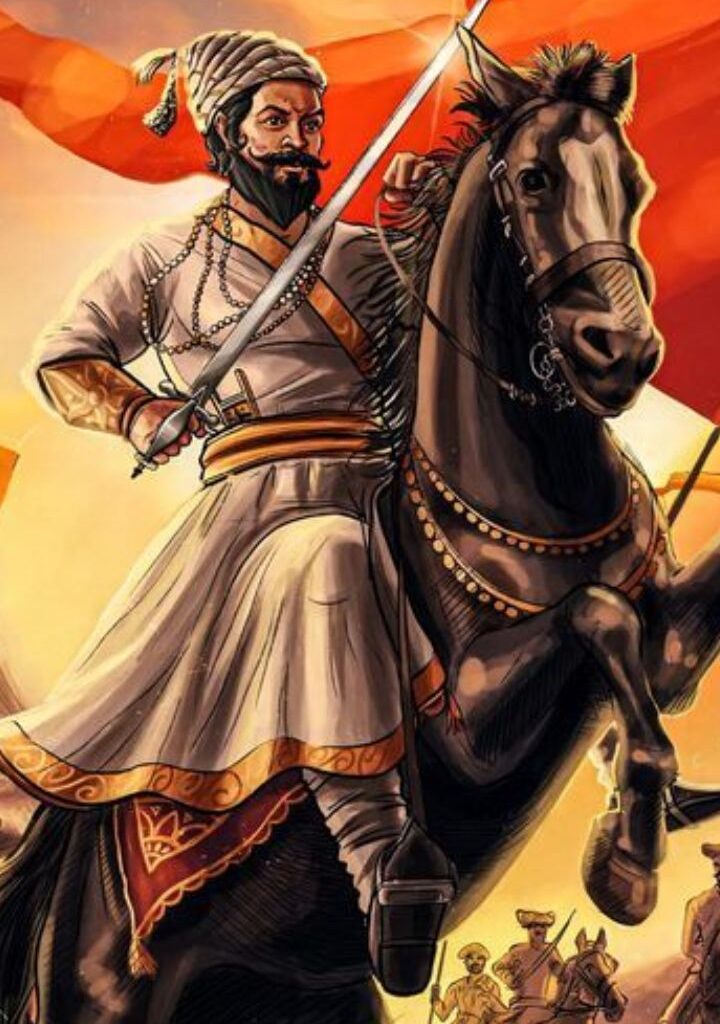
The history of the Maratha Empire is rooted in the warrior ethos of the western part of the Indian subcontinent, specifically the western Deccan Plateau. During the 16th century, this region witnessed the rise of various warrior groups, laying the foundation for the empire’s eventual formation. However, it was Shivaji Maharaj, a warrior of exceptional military prowess, who truly established the Maratha kingdom. Born in 1627, Shivaji Maharaj fought against the oppressive rule of the Mughal emperor Aurangzeb, ultimately establishing the Maratha Empire in 1674.
His eldest son, Sambhaji, continued the empire’s expansion, further strengthening its foothold in the western part of India. The early history of the Maratha empire is intricately linked with the struggle for Hindavi Swarajya, a concept of self-rule for the Indian subcontinent.
The Founding Era
During the founding era of the Maratha Empire, Shivaji Maharaj played a pivotal role in laying the groundwork for the empire’s lasting legacy. His early reign was marked by the establishment of Maratha power, where he adopted guerrilla warfare tactics, successfully challenging the powerful Mughal empire. The empire’s early history is also closely associated with the valour and determination of Chhatrapati Rajaram, the son of Shivaji Maharaj, who played a crucial role in the empire’s early history, particularly during the war of 27 years against the Mughal empire.
After the death of Shivaji, the Maratha Empire flourished under the leadership of Shivaji’s son Sambhaji, one of the notable Maratha rulers. Sambhaji, along with the Maratha soldiers, never lost a fight to the Aurangzeb-led Mughal forces for eight years despite the persistent threat from Aurangzeb. After Emperor Aurangzeb died in 1707, Shahuji, son of Sambhaji (and grandson of Shivaji), was released by Bahadur Shah, the next Mughal emperor. He immediately claimed the Maratha throne and challenged his aunt Tarabai and her son, Rajaram’s widow.
Key Early Milestones
The early history of the Maratha empire is dotted with several key milestones that shaped its trajectory. One of the most significant milestones was the third battle of Panipat, fought in 1761, where the empire faced a decisive defeat at the hands of Ahmad Shah Durrani and his army. Additionally, the prime minister of the empire, Baji Rao, made substantial contributions to the empire’s early milestones, expanding its influence and power. Balaji Vishwanath, the first Peshwa, also played a pivotal role in the early history of the empire, shaping its political landscape and administration.
These early milestones showcase the power struggle between the Maratha empire and the Mughal emperor Aurangzeb, highlighting the empire’s resilience and determination to establish its rule. Peshwa Bajirao, one of the greatest Peshwas ever, further strengthened the Maratha Kingdom with his leadership, leading them to victory in more than 40 wars. He even marched on Delhi and ultimately deposed the Mughal rulers. During the reign of Peshwa Balaji Baji Rao, the Maratha empire achieved its peak expansion under his leadership. By 1760 the empire encompassed a territory of more than 250 million acres (equivalent, to one million square kilometres) which accounted for around one-third of the Indian subcontinent.
Following the battle of Panipat, Madhav Rao I, the Peshwa of the empire initiated efforts to revive the Maratha Empire. To ensure governance he granted partial autonomy to chosen knights who assumed responsibility for various semi-autonomous Maratha states. The decline of the Maratha Empire was marked by Nana Sahib, also known as Govind Dhondu Pant, who was adopted by Peshwa Baji Rao II. He emerged as one of the leaders in the 1857 rebellion, against British rule.
The Role of Shivaji and His Descendants
Following the empire’s founding, the rule of Shivaji and his descendants had a profound impact on the Maratha empire’s history. From establishing a lasting legacy to implementing expansion and administration strategies, the rule of Shivaji and his descendants shaped the empire’s trajectory, leaving an indelible mark on Indian history.
Establishing a Legacy
Shivaji Maharaj’s legacy is deeply entrenched in the history of the Maratha empire. His rule is marked by his valour, military acumen, and the establishment of Maratha power. The coronation of Shivaji occurred in a way that conveyed a message to rulers of the non-Hindu faith. The message was clear and resounding. It was the moment for Hindus to assert their control over their homeland. Through a coronation ceremony, Shivaji positioned himself prominently delivering a direct warning, to the Mughals.
Shivaji’s early reign laid the foundation for the empire’s lasting legacy, where the empire’s power and influence expanded throughout western India. His pursuit of Hindavi Swarajya, the dream of self-rule, resonated with the people of the empire, elevating the empire’s significance in the Indian subcontinent.
Expansion and Administration Strategies
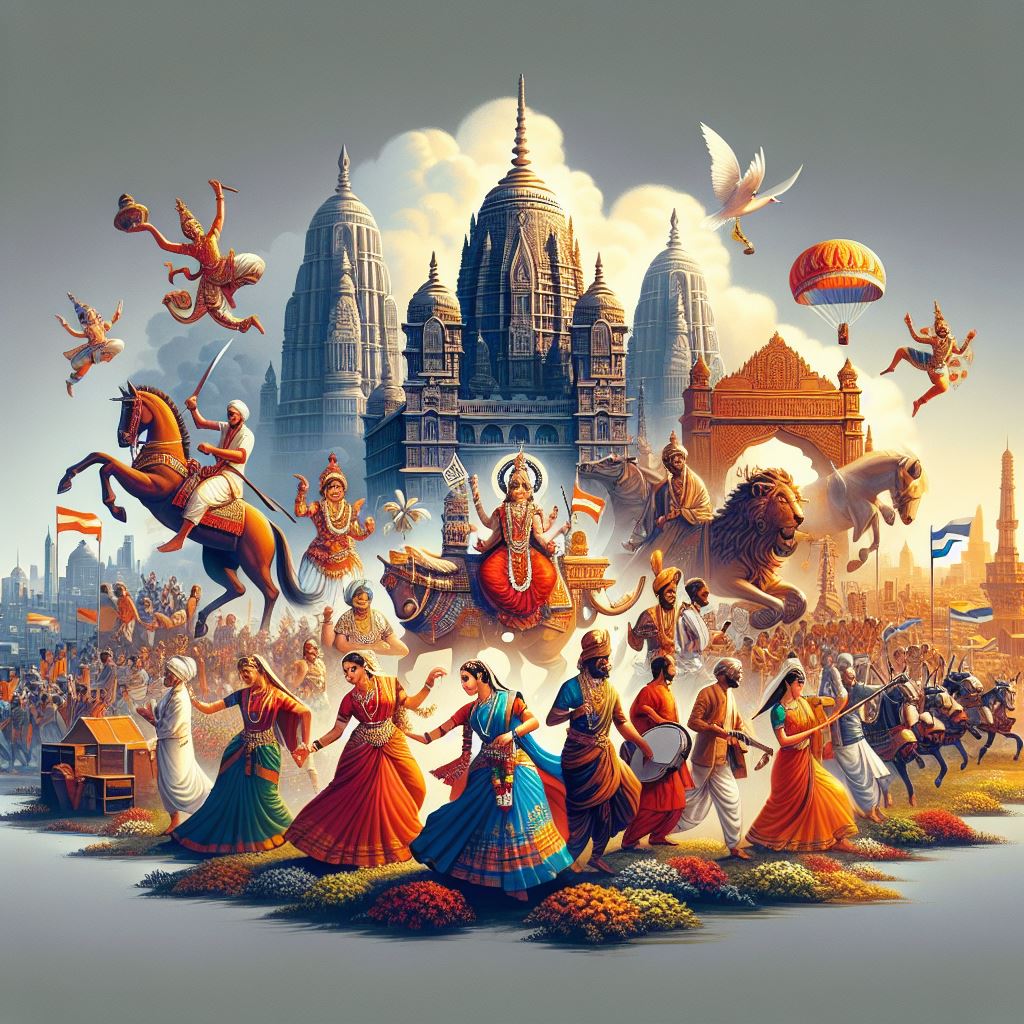
The early history of the Maratha empire is characterized by the empire’s expansion and administration strategies, which were crucial in shaping the empire’s history and influence. The empire adopted effective land revenue systems, princely state administration, and guerrilla warfare tactics, allowing for the large-scale expansion of its territory. These strategies, coupled with direct rule by the English East India Company, exemplify the empire’s adaptability and resilience, establishing it as a prominent power in the region. Soldiers, from social groups, were assigned the responsibility of upholding justice and maintaining stability… For instance, indigenous Pindaris from nearby villages served in the Maratha army.
The Influential Peshwa Era
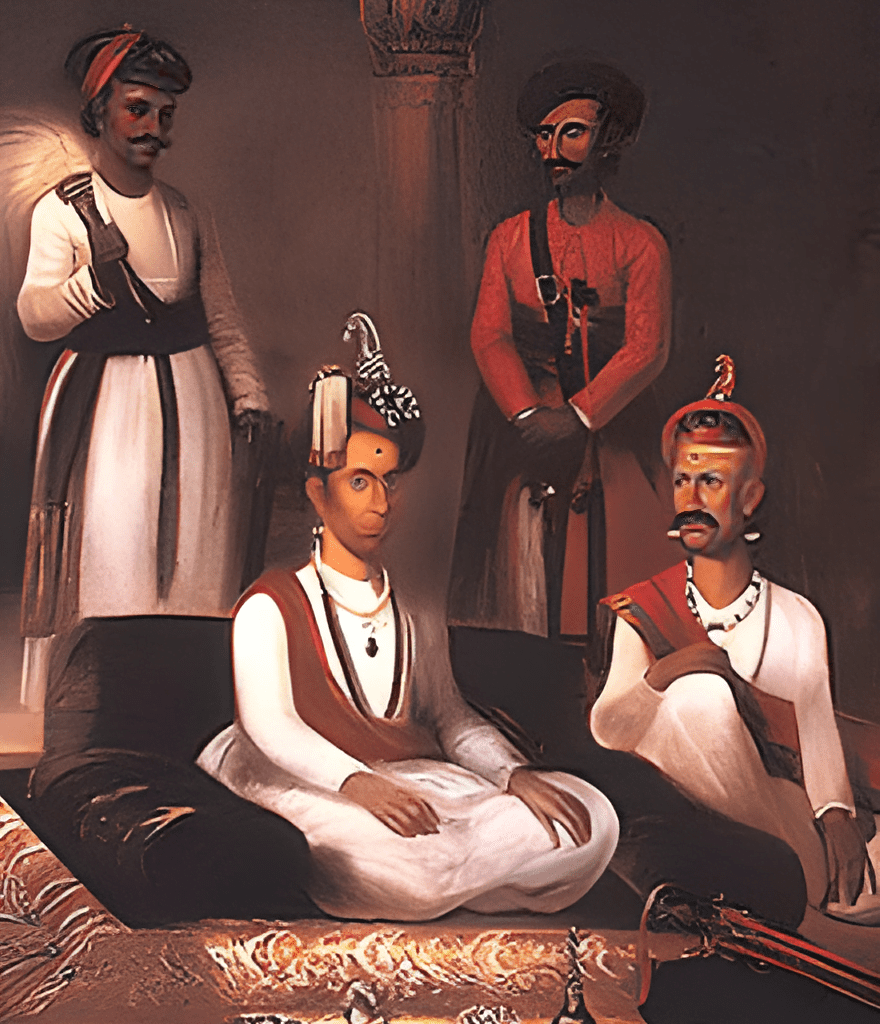
The Peshwa era, spanning the 18th century, marked a transformative period in the history of the Maratha empire. Led by the Peshwas, prime ministers of the empire, this era witnessed significant changes in power dynamics, governance, and military strategies.
Peshwas and their Contributions
Peshwa Baji Rao II’s rule had a profound impact on the history of the Maratha empire. The peshwas, prime ministers of the empire, played a central role in the empire’s governance, administration, and expansion. Their strategies and contributions reshaped the empire’s history, leaving a lasting imprint on its trajectory.
Changes in Power Dynamics
The Peshwa era brought about significant shifts in power dynamics within the Maratha empire. This era witnessed the reconfiguration of power hierarchies, where the Peshwa rule played a paramount role. The evolving power dynamics during the Peshwa era reflected the empire’s adaptability, as it navigated through the complexities of governance, statecraft, and the empire’s interactions with external powers.
Confederacy Era and its Effects

Following the Peshwa era, the confederacy era marked a new chapter in the history of the Maratha empire. This era was characterized by the rise of new leaders, shifts in territorial control, and the empire’s response to internal and external conflicts.
Rise of New Leaders
The confederacy era witnessed the rise of new leaders within the Maratha empire, who played pivotal roles in shaping the empire’s history. These leaders brought fresh perspectives, strategies, and political acumen, ushering in a transformative phase of the empire’s history. Their ascent to power marked a turning point in the empire’s leadership dynamics, where the empire’s future trajectory was shaped by its vision and governance.
Shifts in Territorial Control
Territorial control within the Maratha empire underwent dynamic shifts during the confederacy era. The empire witnessed fluctuations in territorial dominance, influencing its geopolitical standing, economic power, and military prowess. These shifts in territorial control showcased the empire’s adaptability, resilience, and ability to navigate through the complexities of regional power dynamics, ultimately impacting the empire’s history.
Rebellions that Shaped the Empire
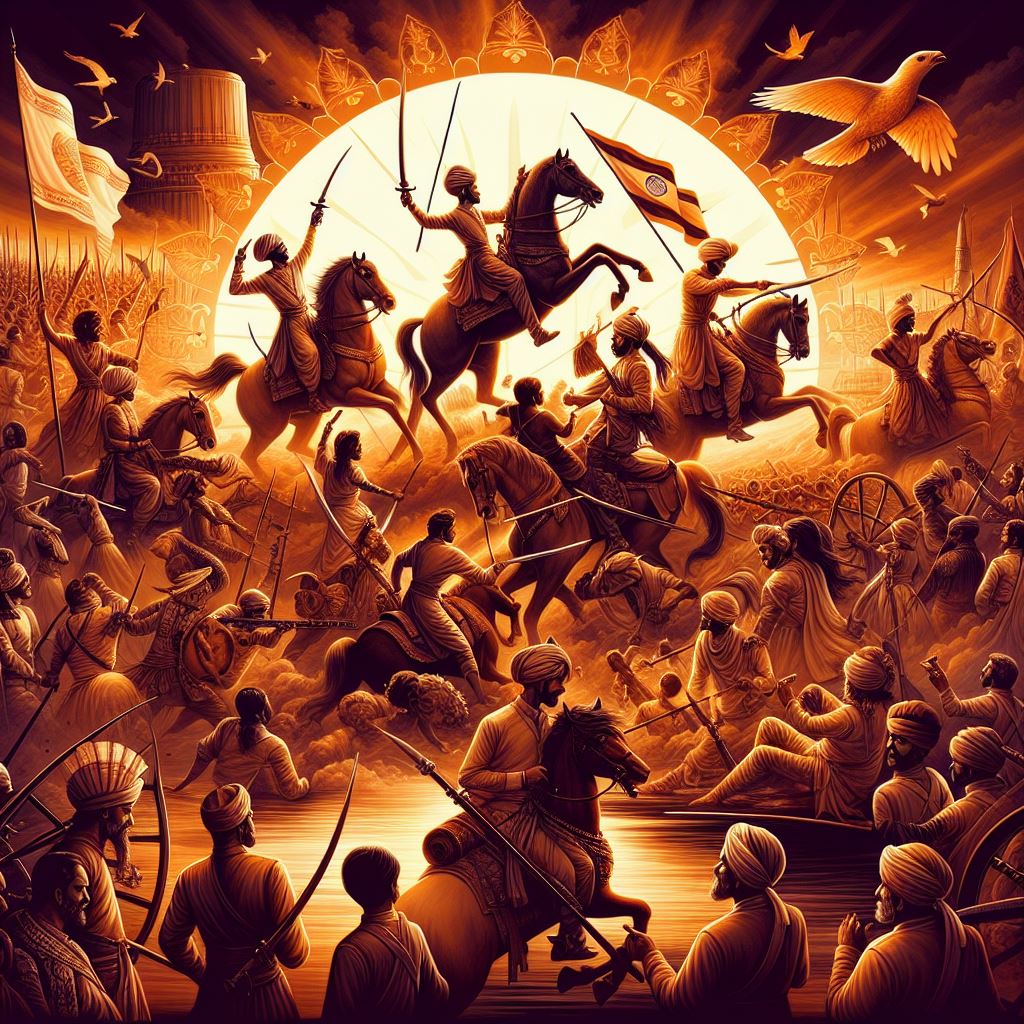
Throughout its history, the Maratha Empire encountered significant internal uprisings and external conflicts, which shaped the empire’s trajectory, governance, and military strategies.
Significant Internal Uprisings
Internal uprisings within the Maratha empire catalyzed far-reaching sociopolitical changes, testing the empire’s resilience and governance. These uprisings, which originated from various regions within the empire, prompted the empire to adapt, evolve, and address the concerns of the local communities. The empire’s response to internal unrest, including the implementation of administrative, military, and cultural reforms, became a defining feature of its history, as it sought to maintain stability and unity.
External Conflicts and Challenges
The Maratha Empire confronted formidable external conflicts and challenges, which shaped its trajectory, military strategies, and diplomatic alliances. From the Mughal Empire to the British East India Company, the empire faced the vie for power, territorial expansion, and the preservation of its sovereignty. The empire’s resilience, strategic acumen, and adaptability in the face of external conflicts left an indelible imprint on the empire’s history, highlighting the empire’s ability to navigate the complexities of regional power dynamics.
Maratha Empire’s Governance and Military Structure

The governance and military structure of the Maratha empire were instrumental in sustaining its vast territories, ensuring efficient administration, and safeguarding the empire’s power.
Administrative Systems
The empire’s administrative systems, including land revenue administration and princely state governance, played a crucial role in sustaining the empire’s territories. These robust administrative systems facilitated efficient governance, resource management, and the integration of diverse regions within the empire. The empire’s commitment to effective and inclusive administration, blending tradition with innovation, laid the foundation for its sustained influence.
Military Tactics and Innovations
The empire’s military tactics and innovations exemplified its strategic dexterity, adaptability, and agility. Military innovations, such as guerrilla warfare tactics, bolstered the empire’s defence, expansion efforts, and the empire’s ability to respond to evolving warfare dynamics. The empire’s military prowess, underscored by its penchant for tactical innovation, left an indelible mark on the subcontinent’s history, influencing the course of warfare strategies in the region.
Rulers, Administrators, and Generals of Influence
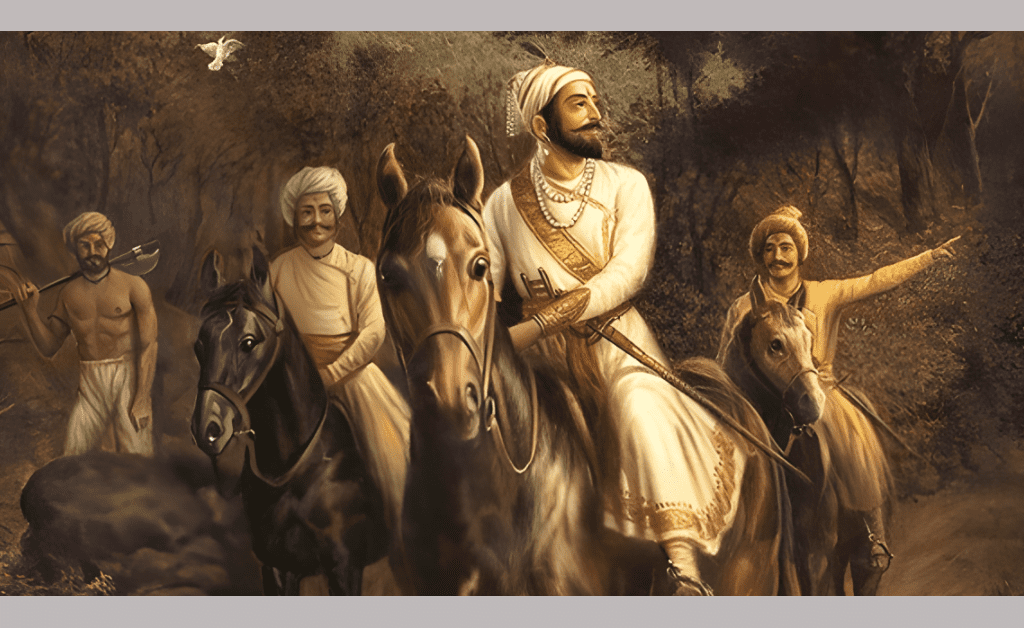
Throughout the empire’s history, rulers, administrators, and generals of influence played paramount roles, shaping the empire’s political, military, and cultural narratives.
The Role of Imperial Houses
Imperial houses within the Maratha empire symbolized the empire’s rich tapestry of leadership, heritage, and power. The contributions of these imperial houses, such as the Bhonsle dynasty, the Holkar dynasty, the Scindia dynasty, and the Gaekwad dynasty, were integral to the empire’s multifaceted identity. These imperial houses, through their rule, patronage, and strategic alliances, played a central role in shaping the empire’s cultural, political, and military history, leaving an enduring legacy.
Impact of Federal Houses of Maratha Confederacy
The federal structure of the Maratha confederacy, where power was decentralized, ensured efficient governance, regional representation, and autonomy. The confederacy’s federal houses, such as the Peshwa, the Holkars, the Scindias, the Bhonsles, and the Gaekwads, facilitated coordination, cooperation, and the preservation of the empire’s diverse cultural and societal development. The confederacy’s federal structure, through its inclusive governance, contributed to the confederacy’s military strength, political stability, and the empire’s lasting influence.
The Legacy of the Maratha Empire

The Maratha Empire’s legacy is deeply intertwined with the cultural, societal, and political landscape of India. Its influence is pervasive, leaving an indelible imprint on modern India, where the empire’s history, values, and achievements continue to inspire contemporary narratives of resilience, leadership, statecraft, and regional autonomy.
Cultural and Societal Implications
The Maratha Empire’s influence is particularly evident in the cultural landscape of western India. The empire’s rule resulted in the preservation and promotion of the Marathi language, and literature, and the flourishing of the regional arts, music, and architecture. The empire’s patronage of the arts, literature, and the architectural marvels of the region, such as the Raigad Fort, the Shaniwar Wada, and the Rajwada, bear testimony to the empire’s cultural and societal implications, where the empire’s history is woven into the fabric of western India’s heritage.
How did the Maratha Empire Influence Modern India?
The Maratha Empire’s influence is deeply ingrained in the formation of the Indian subcontinent’s political identity. Its impact is manifested in the principles of federalism, regional autonomy, and the preservation of history, languages, and cultural heritage. The empire’s legacy is visible in contemporary India, where the empire’s history, values, and achievements continue to shape the political, cultural, and societal narratives of the subcontinent, resonating with the aspirations of the Indian people.
Frequently Asked Questions
Who was the founder of the Maratha Empire?
The founder of the Maratha Empire was Shivaji Maharaj, a warrior of exceptional valour, military acumen, and statesmanship. Born in 1627, Shivaji Maharaj laid the foundation of the empire, establishing it in 1674. His leadership, strategic warfare tactics, and determination to establish Hindavi Swarajya resonated with the people of central India and western India, where he is celebrated as a hero every year on Shiv Jayanti.
Who succeeded the Maratha Empire?
The Maratha Empire officially came to an end in 1818 with the defeat of Peshwa Baji Rao II by the British East India Company. The Marathas faced battles against the British and eventually suffered defeat in 1818. Spanning a portion of the subcontinent the Maratha Empire successfully held off British forces throughout the 18th century. However internal conflicts between the Peshwas and their army commanders, known as sardars caused divisions, within their ranks. Under British paramountcy, India came under direct British rule, marking a new chapter in the subcontinent’s history.
However, the empire’s legacy is still visible in Indian culture, politics, and history, where the empire’s history, rulers, and achievements continue to inspire the Indian people. The Marathas also re-established their dominance in northern India through victories over various regional powers, such as the Jats of Mathura, Rajputs of Rajasthan, and Pashtun-Rohillas of Rohilkhand. Following the battle of Panipat the Rajputs suffered a defeat at the hands of Malhar Rao Holkar forces leading to the reinstatement of Maratha rule, in Rajasthan.
How was the Maratha Empire formed?
The Maratha Empire was formed in the 17th century by Shivaji Bhonsle, a warrior and king of exceptional military prowess. Shivaji Bhonsle, from the Maratha caste, established a strong military force, adopted guerrilla warfare tactics, and successfully conquered several territories, establishing an independent Maratha kingdom. The empire’s power and influence expanded in the early 18th century under the rule of other prominent rulers, such as Peshwa Baji Rao I and II, shaping the empire’s history, governance, and territorial control.
The Maratha rule formally began in 1674 with the coronation of Shivaji as the Chhatrapati. The Maratha empire also included warriors, administrators, and other nobles from the Maratha and various other castes from what is known today as Maharashtra. The Maratha rule, which commenced with Shivaji’s coronation, marked the formal beginning of the Maratha empire, encompassing not only individuals from the Maratha caste but also from other castes in Maharashtra.
Who defeated the Maratha Empire?
The Maratha Empire faced various defeats throughout its history, including the third battle of Panipat, which took place in 1761. In an attempt to drive the Marathas out of North India, Ahmad Shah Durrani, the Afghan ruler, joined forces with Nawab of Oudh and the Rohillas before challenging the Marathas for a battle. The empire suffered a decisive defeat at the hands of Durrani and his army in this battle. Additionally, the British East India Company played a significant role in weakening and ultimately defeating the empire, culminating in the Anglo-Maratha Wars.
These wars concluded with the defeat of the Marathas, leading to their decline and eventual dissolution. The Marathas also faced challenges from the Mughal governor Sayyid Hussain Ali, who was defeated by the Marathas in 1719, further weakening the already declining Mughal Empire. Baji Rai I – The Maratha Empire was able to capture Odisha when Raghoji launched a series of six invasions into Bengal. The Maratha Empire’s wealth rose when the then-Nawab of Bengal, Alivardi Khan, consented to pay an annual levy of 1.2 million rupees… Marathas also won over the Afghan forces.
What was the Capital of the Maratha Empire?
The capital of the Maratha Empire was initially Raigad, where Shivaji Maharaj established the empire’s power base. However, the capital of the empire was later moved to Satara and then Pune, where it became the de facto capital of the empire, particularly during the Peshwa rule. Pune, located in western India, played a central role in the empire’s history, serving as the political, cultural, and administrative centre of the empire.
The empire’s territorial expansion peaked under the rule of Chhatrapati Shivaji Maharaj, where the empire’s power radiated from western Maharashtra, the western part of the Deccan plateau, and southern India. The coronation ceremony of Rajaram, who seized the Chhatrapati throne in 1690, took place at Jinji Fort in present-day Tamil Nadu.
What was the economy like during the time of the Maratha Empire, and how did it contribute to its strength?
During the time of the Maratha Empire, the economy was agricultural-based, with a focus on trade and commerce. The empire had a strong revenue system, which included land taxation and customs duties. This economic stability allowed the empire to finance its military campaigns and maintain its strength.
How did the Maratha Empire impact Indian history and society?
The Maratha Empire had a profound impact on Indian history and society. It played a crucial role in ending Mughal rule and establishing Hindu dominance in India. The empire also promoted regional autonomy, fostered military innovations, and contributed to the cultural and architectural development of India.
The Maratha Empire, spanning the 17th and 18th centuries, is widely regarded as a glorious era in the history of India, particularly in South India. This Hindu state, known as the Maratha Empire, was founded by the legendary warrior king, Shivaji Maharaj, and left an indelible mark on the subcontinent, shaping the course of history. From its origins to the influential Peshwa era, the confederacy era, and the empire’s governance, the Maratha Empire boasts a rich history filled with remarkable rulers, strategic military tactics, and significant societal and cultural implications.
During its height, the empire had control over a land area spanning 250 million acres (equivalent, to one million square kilometres) which accounted for approximately one-third of South Asia. Join us as we delve into the captivating story of the Maratha Empire, exploring its founding, early milestones, the role of Shivaji and his descendants, the Peshwa era, confederacy, rebellions, governance, rulers, and the empire’s enduring legacy.
Conclusion
The Maratha Empire stands as a testament to the glorious era in Indian history. From its origins to the influential reign of Shivaji and his descendants, the empire witnessed significant milestones and expansion. The Peshwa era brought about changes in power dynamics and administration strategies. The confederacy era saw new leaders rise and territorial control shift. Rebellions shaped the empire, both internally and externally.




